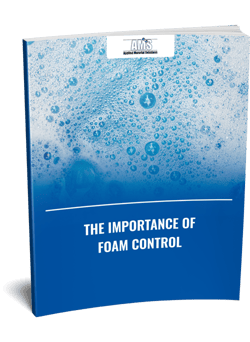A Comprehensive Overview to Executing Foam Control Solutions in Your Operations
Reliable foam control is an essential facet of functional effectiveness that often goes neglected. Understanding the ins and outs of foam generation can significantly impact both performance and product high quality. By taking a look at essential variables such as application compatibility and employees training, companies can maximize their foam management initiatives.
Understanding Foam Challenges
Foam difficulties are a significant worry across numerous markets, influencing operational efficiency and item high quality. The formation of extreme foam can prevent processes such as mixing, transport, and storage space, causing increased downtime and waste. In fields like food and drink, drugs, and petrochemicals, foam can disrupt assembly line, causing item inconsistencies and contamination threats.
Furthermore, foam can block devices performance, leading to pricey repairs and upkeep. For example, in wastewater treatment, foam can disrupt clarifier procedures, resulting in reduced therapy effectiveness and governing conformity issues.
Comprehending the underlying sources of foam generation is important for effective administration. Variables such as surfactants, temperature level changes, and agitation degrees can all add to foam production. Recognizing these elements allows industries to execute targeted techniques that reduce foam development while maintaining item stability.
Sorts Of Foam Control Solutions

Mechanical services involve using devices such as foam skimmers or defoamers. These tools literally remove foam from the surface area of fluids, thus avoiding overflow and preserving optimum degrees in reactors and tanks. Chemical remedies, on the other hand, consist of the application of defoaming agents-- substances that disrupt the foam structure, causing its collapse. These representatives can be silicone-based, natural, or aqueous, each offering distinctive benefits relying on the application setting.
Last but not least, functional techniques concentrate on process changes. This may involve changing tools specifications, such as temperature level and stress, or transforming the flow rates of fluids to lessen foam generation. Additionally, carrying out great housekeeping practices can also reduce foam formation by decreasing pollutants that contribute to foam security.
Selecting the appropriate foam control option includes evaluating the particular demands of the operation, including the kind of process, the qualities of the products entailed, and safety and security considerations.
Selecting the Right Products
Choosing the right foam control items requires a complete understanding of the certain application and its special obstacles. Variables such as the sort of foam, the atmosphere in which it occurs, and the preferred end result all play crucial roles in item selection. Foam Control. As browse around here an example, in sectors such as food processing, it is essential to choose food-grade defoamers that comply with security regulations while properly handling foam.
In addition, take into consideration the viscosity of the liquid where the foam issue exists. Some products are created for low-viscosity applications, while others are tailored for thicker liquids. Compatibility with existing processes is one more vital element; the chosen foam control representatives ought to integrate perfectly without disrupting general operations.
One more crucial variable is the method of application. Some products might call for dilution, while others can be applied straight. Evaluating the ease of usage and the needed dose can supply understandings into the item's performance and cost-effectiveness.
Implementation Techniques
Effective application approaches for foam control services need a methodical method that lines up item choice with functional needs. The very first step involves a thorough evaluation of the processes where foam takes place, recognizing specific areas that you can try here necessitate intervention. By involving cross-functional groups, including manufacturing, engineering, and quality assurance, companies can collect insights that notify the choice of the most reliable foam control products.
Following, it is critical to establish clear objectives for foam decrease, guaranteeing that these objectives are quantifiable and possible. This might entail specifying acceptable foam levels and the timelines for execution. Training personnel on the homes and application methods of picked foam control agents is equally vital, as appropriate usage is important for optimal outcomes.
In addition, incorporating foam control services right into existing operations requires mindful planning. Eventually, a well-structured strategy will boost functional efficiency while successfully taking care of foam-related challenges.
Surveillance and Evaluating Effectiveness
Tracking and examining the performance of foam control services is essential for guaranteeing that carried out approaches generate the wanted outcomes. This process includes methodical information collection and evaluation to analyze the efficiency of foam control representatives and techniques. Key performance indicators (KPIs) ought to be established prior to implementation, enabling a clear baseline against which to measure progress.

Examining performance additionally calls for routine reviews of foam control procedures and agent effectiveness. This can be achieved with sampling and testing, enabling drivers to figure out if present options are satisfying functional requirements. It is vital to get comments from team participants that engage with these systems daily, as their understandings can expose functional subtleties that quantitative data might neglect.

Inevitably, view it a structured monitoring and assessment structure assists determine needed modifications, making sure that foam control remedies remain effective, affordable, and aligned with organizational objectives.
Verdict
To conclude, efficient foam control services are important for optimizing functional performance and preserving item quality. A comprehensive understanding of foam challenges, incorporated with the choice of suitable items and execution approaches, assists in the successful management of foam generation. Developing measurable KPIs and spending in employees training further improve the effectiveness of foam control steps. Routine monitoring and analysis make sure continuous renovation, inevitably leading to an extra structured and productive functional environment.
Carrying out good housekeeping techniques can also reduce foam formation by decreasing impurities that contribute to foam stability.
Picking the right foam control products requires an extensive understanding of the particular application and its special difficulties (Foam Control).Successful execution techniques for foam control remedies require a systematic technique that straightens item option with operational needs.In final thought, reliable foam control remedies are important for enhancing operational effectiveness and preserving item top quality. A thorough understanding of foam challenges, integrated with the choice of ideal items and execution strategies, facilitates the successful management of foam generation